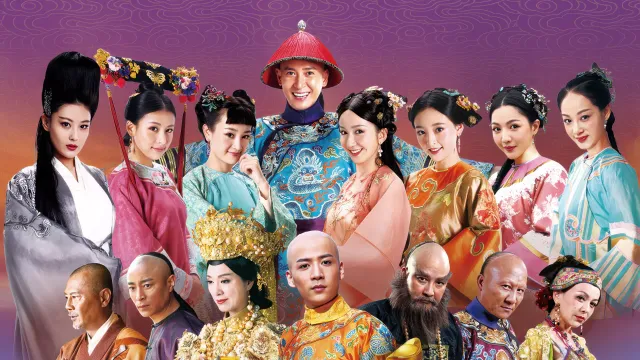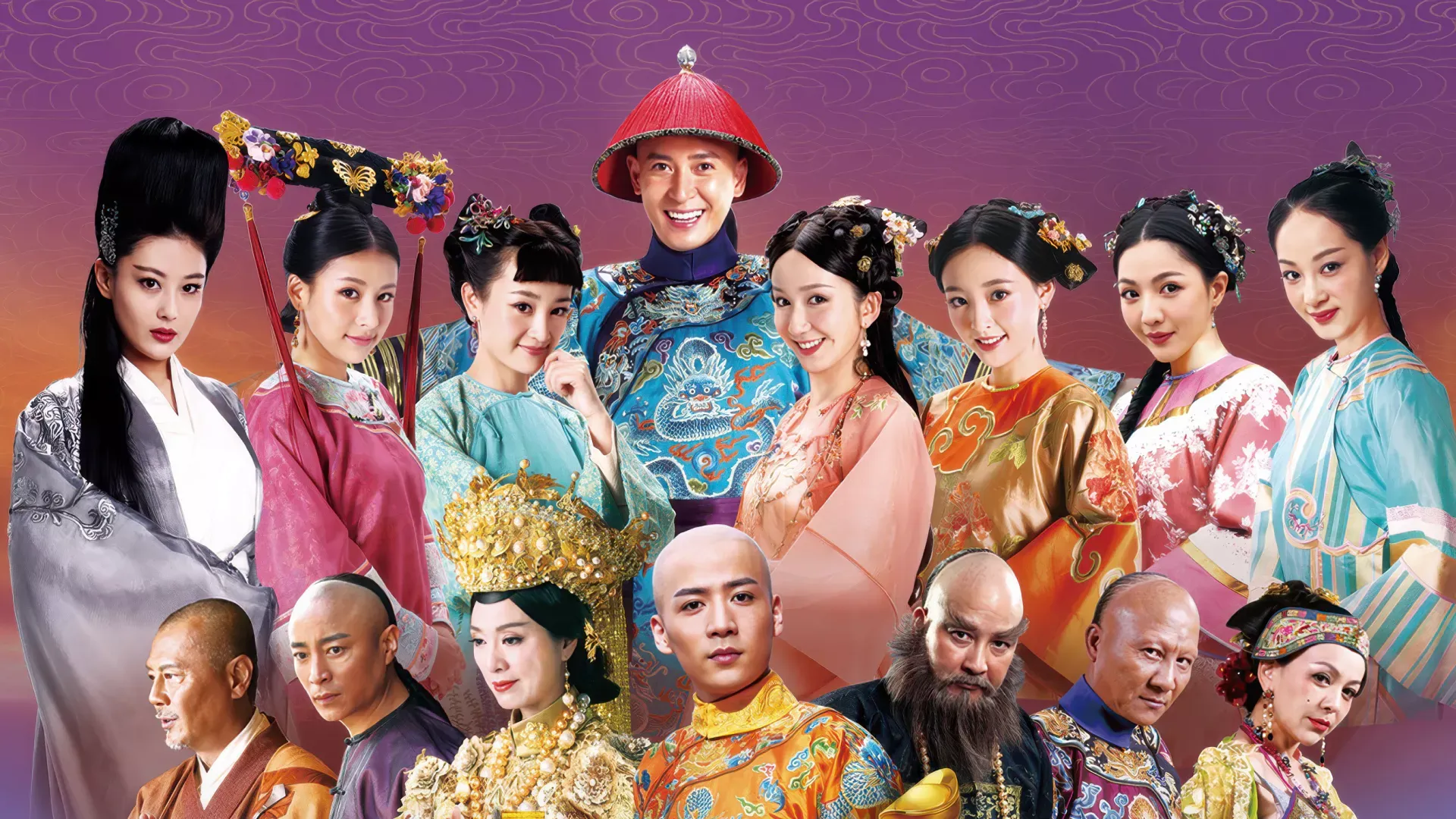The Qing Dynasty (清朝 – Qīng Cháo) serves as the historical backdrop for multiple Jin Yong novels, providing the political context within which the martial arts world’s power struggles unfold. The dynasty appears in The Book and the Sword, The Deer and the Cauldron, A Deadly Secret, and Sword Stained with Royal Blood, spanning different periods of Qing rule and reflecting the dynasty’s evolution over time.
History
Foundation
The Qing Dynasty was established in 1636 by Nurhaci and his successors, who unified the Manchu tribes and conquered China. The dynasty was the last imperial dynasty of China, ruling from 1644 to 1912, and was characterized by its Manchu ethnic identity and sophisticated governance system.
Political landscape during the novels
The Qing Dynasty appears across multiple Jin Yong novels, reflecting different periods of its rule:
The Book and the Sword (18th century): Set during the reign of Emperor Qianlong, the novel explores the complex relationship between Han Chinese and Manchu cultures. The Red Flower Society represents anti-Qing resistance movements, while the novel examines themes of ethnic identity and political loyalty.
The Deer and the Cauldron (17th century): Set during the early Qing period, the novel explores the establishment of Manchu rule and the resistance movements that emerged. The Heaven and Earth Society represents the most significant anti-Qing resistance movement, while the novel examines themes of loyalty, betrayal, and political survival.
A Deadly Secret (18th century): Set during the mid-Qing period, the novel explores the corruption and factionalism within the imperial court. The novel examines themes of power, corruption, and the complex relationships between different political factions.
Sword Stained with Royal Blood (17th century): Set during the early Qing period, the novel explores the resistance movements that emerged after the fall of the Ming Dynasty. The novel examines themes of loyalty, betrayal, and the struggle for political legitimacy.
Decline and transformation
By the late 19th century, the Qing Dynasty was facing significant challenges from both internal corruption and external pressures. The dynasty’s inability to modernize and resist foreign influence would eventually lead to its downfall in 1912.
Organisation
Imperial government
The Qing Dynasty operated through a sophisticated dual governance system that integrated Manchu and Han Chinese administrative structures:
- Emperor: Absolute ruler with divine authority, often balancing Manchu and Han interests
- Grand Council: Administrative body handling imperial decrees and policy decisions
- Six Ministries: Civil service departments (Personnel, Revenue, Rites, War, Justice, Works)
- Censorate: Oversight body monitoring official conduct
- Provincial Administration: Local government structures with Manchu and Han officials
Martial arts integration
The Qing government maintained a complex relationship with the martial arts world. While officially supporting orthodox schools that promoted stability, the government also monitored and sometimes suppressed organisations that were seen as potential threats to imperial authority.
Cultural integration
The Qing Dynasty promoted a policy of cultural integration while maintaining Manchu ethnic identity. This created a complex cultural landscape where traditional Chinese values coexisted with Manchu customs and governance practices.
Martial arts abilities
Official martial arts
The Qing military maintained its own martial traditions, separate from the civilian martial arts world:
- Banner Army Techniques: Specialized combat methods for the Eight Banner armies
- Military Training: Standardized combat techniques for the imperial army
- Archery and Cavalry: Traditional Manchu military skills maintained by the state
Military training
The Qing Dynasty maintained a professional military with specialized training in:
- Banner System: Military organisation based on ethnic and regional divisions
- Archery: Traditional Manchu archery methods
- Cavalry Tactics: Mounted combat and reconnaissance
- Siege Warfare: Fortification and siege techniques
Philosophy
Dual governance
The Qing Dynasty’s governance was based on a dual system that balanced Manchu and Han interests:
- Ethnic Balance: Maintaining Manchu dominance while incorporating Han Chinese governance
- Cultural Integration: Promoting cultural exchange while preserving ethnic identities
- Political Stability: Ensuring imperial authority while managing diverse populations
- Bureaucratic Merit: Advancement through examination and merit, with ethnic considerations
Cultural superiority
The Qing Dynasty promoted a sense of cultural superiority that influenced the martial arts world:
- Manchu Traditions: Emphasis on Manchu cultural practices and military skills
- Social Hierarchy: Clear distinctions between different ethnic groups and social classes
- Moral Standards: Strict codes of conduct for officials and citizens
- Cultural Preservation: Protection of traditional arts and knowledge
Notable members
Historical figures
- Nurhaci (努尔哈赤) – Founder of the Qing Dynasty
- Emperor Hong Taiji (皇太极) – Second Qing emperor, established the dynasty
- Emperor Shunzhi (顺治皇帝) – First Qing emperor to rule over China
- Emperor Kangxi (康熙皇帝) – Long-reigning emperor who consolidated Qing rule
- Emperor Yongzheng (雍正皇帝) – Reforming emperor who strengthened imperial authority
- Emperor Qianlong (乾隆皇帝) – Long-reigning emperor during the height of Qing power
Imperial officials
- Grand Councilors – Senior administrative officials
- Provincial Governors – Regional administrators, often Manchu
- Military Commanders – Officers of the Banner armies
- Censors – Officials monitoring government conduct
Relationships
Alliances
- Orthodox Martial Arts Schools: The imperial government maintained cordial relations with orthodox schools that promoted stability
- Local Officials: Provincial and county officials often formed alliances with martial arts schools for mutual protection
- Merchant Guilds: Commercial organisations that supported imperial stability
Rivalries
- Anti-Qing Resistance: Groups like the Heaven and Earth Society and Red Flower Society opposed Manchu rule
- Secret Societies: Underground organisations that opposed imperial rule
- Bandit Groups: Criminal organisations that challenged local authority
Political connections
- Bureaucratic Networks: Complex web of official relationships and patronage
- Military Alliances: Strategic partnerships with local military commanders
- Cultural Institutions: Support for traditional arts and scholarship
Locations
Capital
- Beijing – Imperial capital and administrative center
- Forbidden City – Imperial palace complex
- Temple of Heaven – Religious and ceremonial center
Military bases
- Banner Garrisons – Military installations throughout the empire
- Border Fortifications – Defensive structures along frontiers
- Naval Bases – Coastal defense installations
Cultural centers
- Confucian Academies – Educational institutions promoting traditional values
- Imperial Libraries – Collections of official records and literature
- Temple Complexes – Religious centers supporting imperial legitimacy
Behind the scenes
Historical background
The Qing Dynasty (1636-1912) was the last imperial dynasty of China, established by the Manchu people. The dynasty was characterized by its sophisticated dual governance system, cultural integration policies, and eventual decline due to internal corruption and external pressures.
The Qing context across novels
The Qing Dynasty appears across multiple Jin Yong novels, reflecting different periods of its rule:
The Book and the Sword explores the mid-Qing period under Emperor Qianlong, examining the complex relationship between Han Chinese and Manchu cultures. The Red Flower Society represents anti-Qing resistance movements, while the novel examines themes of ethnic identity and political loyalty.
The Deer and the Cauldron explores the early Qing period and the establishment of Manchu rule. The Heaven and Earth Society represents the most significant anti-Qing resistance movement, while the novel examines themes of loyalty, betrayal, and political survival in a changing world.
A Deadly Secret examines the mid-Qing period and the corruption within the imperial court. The novel explores themes of power, corruption, and the complex relationships between different political factions during a period of relative stability.
Sword Stained with Royal Blood explores the early Qing period and the resistance movements that emerged after the fall of the Ming Dynasty. The novel examines themes of loyalty, betrayal, and the struggle for political legitimacy during a period of transition.
Cultural impact and legacy
The Qing Dynasty’s cultural achievements included:
- Literature: Development of vernacular fiction and drama
- Art: Advancements in painting, calligraphy, and decorative arts
- Architecture: Construction and expansion of the Forbidden City
- Technology: Innovations in various fields, though limited by later isolation
The dynasty’s influence on Chinese culture and governance continued long after its fall, shaping the development of Chinese society and political thought.
In Jin Yong’s works
The Qing Dynasty serves as a crucial historical backdrop across multiple novels, representing:
- Political Complexity: The sophisticated diplomatic relationships between multiple powers
- Cultural Themes: The contrast between Han Chinese culture and Manchu traditions
- Social Structure: The hierarchical society and bureaucratic systems that influenced the martial arts world
- Power Dynamics: The complex relationships between different power centers and the interaction between orthodox schools and imperial authority
The dynasty’s evolution across these novels reflects Jin Yong’s exploration of how political systems change over time and how these changes affect the martial arts world and individual characters.
See also
- Unknown Novel factions
- Jin Yong factions
External links
- Qing Dynasty on Wikipedia
- Nurhaci on Wikipedia
- Emperor Qianlong on Wikipedia
- Forbidden City on Wikipedia

